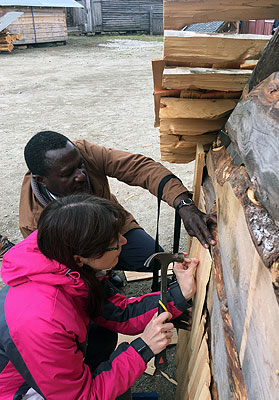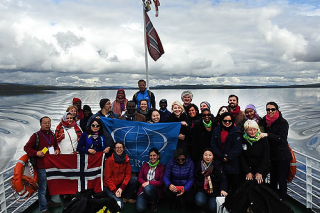The International Course on Linking Nature and Culture in World Heritage Site Management took place at Røros Mining Town and the Circumference World Heritage Site in Norway from 6 to 16 June 2017.
This ground-breaking course is a key component of the new World Heritage Leadership programme developed by ICCROM, IUCN and the Norwegian Ministry of Climate and Environment. It is implemented in collaboration with ICOMOS and UNESCO World Heritage Centre, with additional financial contributions from the Swiss Federal Office of Culture.
The World Heritage Leadership Programme (WHLP) is aimed at fostering good conservation and management practice in the field as a catalyst to broader knowledge creation, new learning resources and improvements in international heritage policy.
The primary themes of the programme were:
- Promoting the nature-culture-people linkage in managing heritage sites;
- Securing heritage a more dynamic role in wider sustainable development.
This course was the first major activity of the World Heritage Leadership Programme, and brought together practitioners and resource persons from both cultural and natural heritage sectors. The course was hosted at the World Heritage site of Røros Mining Town and the Circumference in Norway, which was also used as a case study.
The course was inaugurated by the Mayor of the World Heritage Site of Røros Mining Town and the Circumference, Mr Hans Vintervold. Also attending the opening ceremony were Mr Erlend Gjelsvik, Senior Adviser, Norwegian Directorate for Cultural Heritage (Riksantikvaren); Mr Odd Sletten, Director of the Røros Museum; Mr Tim Badman, Director – IUCN World Heritage Programme; and Gamini Wijesuriya, Project Manager, Sites Unit, ICCROM.
During ten intensive course days, 20 participants from nature and culture sectors representing 20 countries shared their experiences and worked with international resource persons through four different modules covering the topics from the evolution of conservation concepts to the techniques and tools used in management of heritage sites. As a conclusion, the participants presented their views on conservation and management of the Røros Mining Town and the Circumference World Heritage Site, considering the nature-culture-people interlinkages.
At the closing ceremony, a round table discussion took place about capacity building for nature-culture-communities, chaired by Mr Joseph King of ICCROM. Taking part in the round table were the course participants, resource persons and representatives of different municipalities, along with Dr Mechtild Rössler of UNESCO WHC, Ms Gwenaëlle Bourdin of ICOMOS, Mr Tim Badman of IUCN, Mr Gamini Wijesuriya of ICCROM, Ms Ingunn Kvisterøy of the Ministry of Climate and Environment, Ms Anne Nyhamar of Riksantikvaren, also ICCROM Council Member, and Ms Runa Finborud the Røros Mining Town and the Circumference WH Board leader.
The event was a subject of interest for the local media, and was covered in Norwegian newspapers and on television.
Member States represented:
Australia, Argentina, Botswana, China, Egypt, Georgia, India, Japan, Kenya, Lebanon, Mexico, Namibia, Norway, Peru, Portugal, Romania, Slovakia, Republic of Korea, South Africa, Sudan, Switzerland, Thailand, TFYR Macedonia, United Kingdom, United States, Viet Nam, Zambia.
Non-Member State:
Costa Rica.



